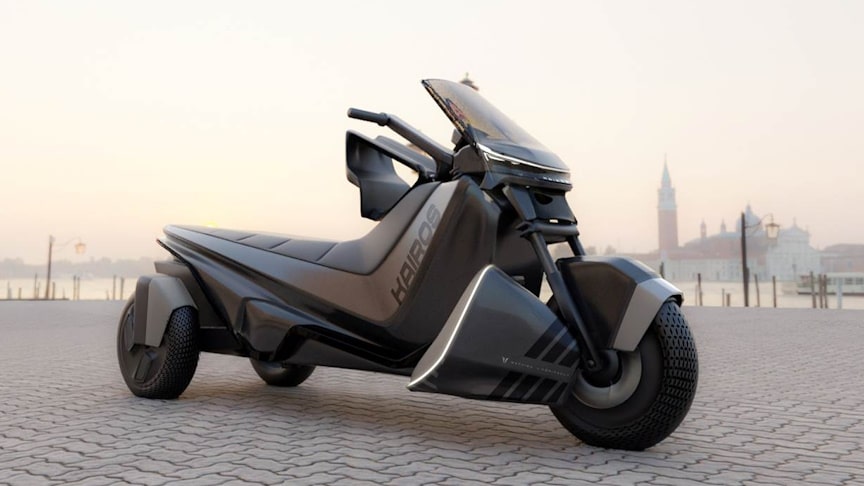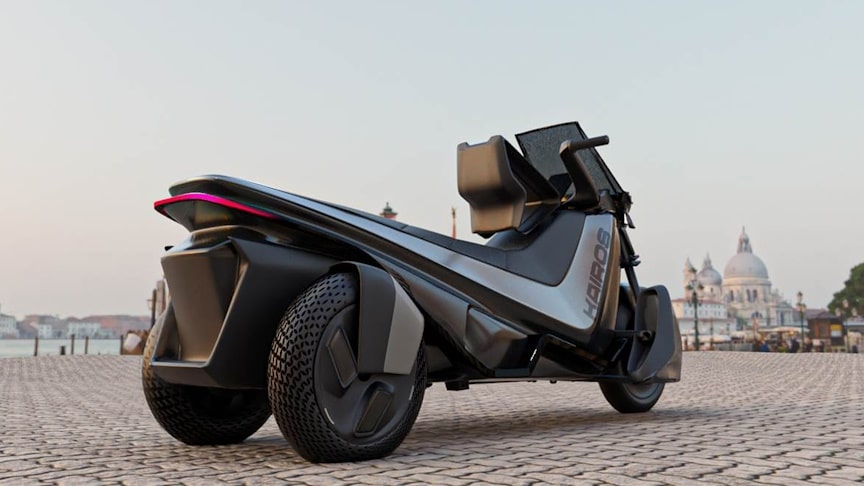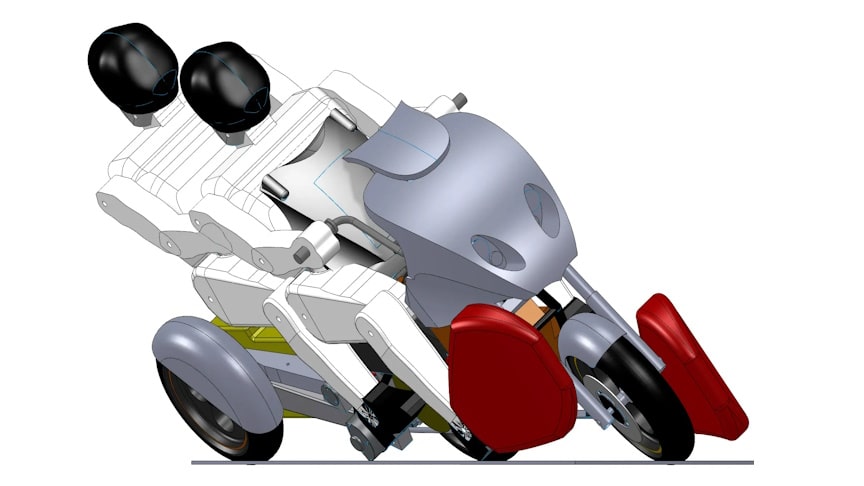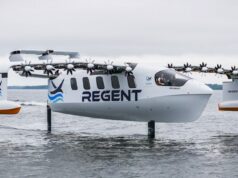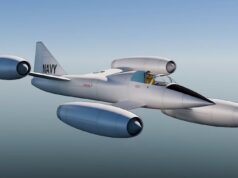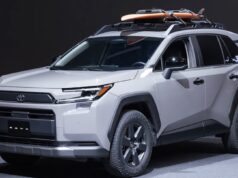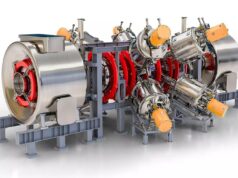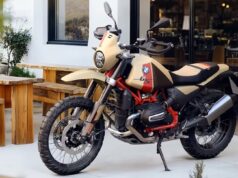The Kairos EV has been designed by transport designer Mathieu L’Hopitault and is being developed through the SIREMS Association which focuses on electric vehicles, as a stable solution for modern roadways. The Kairos EV emerges as a manifesto for a new era of road travel.
source.image: troisroues
Kairos is neither a car, nor a scooter, nor a motorbike. Its unique design by Mathieu L’Hopitault gives it strength, agility and, above all, flawless contact with the asphalt. Your special relationship with the road begins at first sight. Kairos rethinks the whole road experience, starting with a semi-extended feet-forward driving position that makes the most of both rear wheels, for greater traction and stability. You’re now right at the heart of the bends. Tilt control ensures precise trajectories and unrivalled responsiveness. Electric propulsion delivers highly dynamic acceleration and a lively driving experience.
source.image: troisroues
Kairos offers enviable carrying capacity at four points: a main load space located between the rear wheels, an additional volume in front of the driver, and two volumes housed in the Mobile Lateral Elements (MLE). Designed to maintain a constant ground clearance, these are positioned as close as possible to the road surface to ensure that the centre of gravity is as low as possible.
source.image: troisroues
Kairos completely rethinks driver safety by combining the equipment currently available on the market with entirely new features. The Programmed Restraint Device (PRD) positioned in front of the driver drastically reduces the risk of serious injury in the event of a frontal impact. Acting like a seatbelt without the constraints that a seatbelt would create in such a situation, it allows the user to be partially coupled to the vehicle.
Advertisement
This allows the user to benefit from the energy absorption provided by the deformation of the front part of the chassis. In the event of a violent impact and the rear wheels taking off, the DRP frees the driver at a much lower speed than would otherwise be the case. MLEs make a positive contribution to protecting users in the event of a side impact. They also help dissipate energy in the event of a frontal impact, and systematically reduce aerodynamic drag. Tilt control helps to maintain control in emergency situations, such as evasive manoeuvres that are particularly risky with a conventional two-wheeler.
source.image: troisroues
The two-wheeled rear axle reduces the risk of a fall, while the movable side elements, located on either side of the front wheel and controlled by the vehicle’s rolling movements, rest on the ground in extreme cases of loss of grip, thus reducing the driver’s mental workload, particularly on low-grip surfaces. Finally, with its characteristic light signature, Kairos is guaranteed to be seen by other road users..via: troisroues

